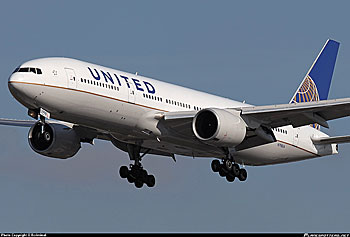By Bruce McPherson, County Supervisor 5th District
New Jet Flight Path Breaks the Quiet

Called “Next Gen,” the Federal Aviation Administration (FAA) has instituted a restructuring of airspace throughout the nation. Next Gen’s purpose is to improve the efficiency of a “Metroplex” of airports by optimizing aircraft arrival and departure procedures at a number of airports, including San Francisco International, Oakland International, Sacramento International, and San Jose Mineta International Airports.
An environmental assessment indicated that there would be no noise issues with this new path, and there were no indications of a problem.
However, many residents, primarily in the mountains, say there are big problems — jets flying overhead about every five minutes and unnerving noise that can be heard indoors, from morning till midnight.
To add to the new noise, the jets flying over Santa Cruz County are readying for landing, lowering their flaps, making it even louder as they pass overhead. The new flight path has concentrated about 300 flights a day over a very small area — about a three mile radius.
I am working with residents to identify some strategies that can be taken to the FAA to change the pathway. I will also be working with Congressman Sam Farr and Congresswoman Anna Eshoo to find ways to alleviate the impacts. If you are experiencing problems, please let me know of the impacts in your neighborhood at bruce.mcpherson@santacruzcounty.us. Also, please report your experience to SFONoise@flysfo.com.
Steelhead and Coho Salmon Restoration
In the past five years, the County has also implemented a new policy to retain large woody material in streams for fish habitat, completed 14 fish passage projects, contributed to steelhead monitoring, implemented numerous road improvement projects that benefit fish, and participated in Coho salmon and steelhead recovery planning. We have dozens of programs and policies in place to protect streams and riparian corridors from sediment, development, and pollutants.
With the ongoing drought and recent statewide orders for Californians to reduce water use, we need to meet our basic needs. We also need to meet the needs for aquatic life. Soon we will be asked to approve a comprehensive plan with prioritized fish recovery actions for the six watersheds in Santa Cruz County.
Steelhead are listed as threatened under the federal Endangered Species Act (ESA), while Coho salmon are listed as endangered under both the federal and state ESA. The listings include Santa Cruz County’s North Coast streams, San Lorenzo River, Soquel Creek, and Aptos Creek. Coho salmon are critically endangered in Santa Cruz County and are expected to recover only with a strong commitment to watershed restoration, a captive broodstock program, and re-introduction into San Lorenzo, Soquel, and Aptos watersheds.
In February 2014, the Valley Women’s Club asked me to initiate a Santa Cruz County action plan for Coho salmon recovery in the San Lorenzo River Watershed. Their request contained a detailed list of actions to support Coho salmon recovery that included both actions from the NOAA Fisheries 2012 Coho Salmon Recovery Plan and additional recommendations. The Santa Cruz County Fish and Game Advisory Commission subsequently reviewed their request, supported a Steelhead and Coho Salmon Conservation Program, and also suggested taking a stronger stand on Coho recovery.
Kristen Kittleson, Fisheries Resource Planner for the County of Santa Cruz, combined recovery actions from the various plans for each of the six Santa Cruz County watersheds — Waddell, Scott, San Vicente, San Lorenzo, Soquel, and Aptos — and prioritized recovery actions.
While there are somewhat different priorities for steelhead and Coho salmon, many of the recovery actions for the two species are the same.
The Steelhead and Coho Salmon Conservation Program describes 20 key actions to protect stream habitat that can be implemented by Environmental Health, Public Works, Planning, Parks, Open Space and Cultural Services, and the Agricultural Commissioner within the next three years. Many of the actions revolve around three critical issues: stream flow, habitat complexity, and sediment.
The plan is expected to come to the Board of Supervisors for adoption this spring. I look forward to its adoption and implementation.